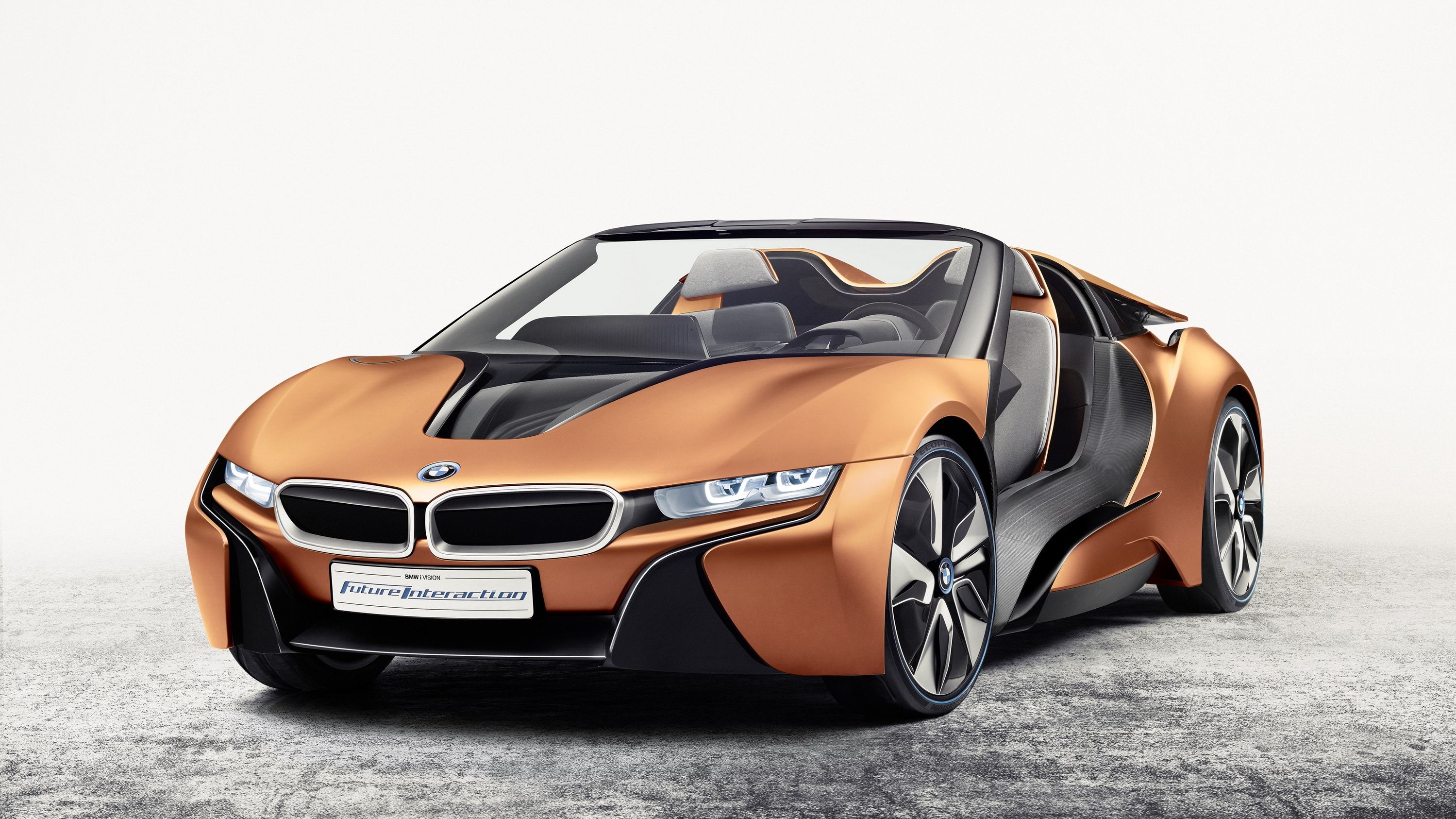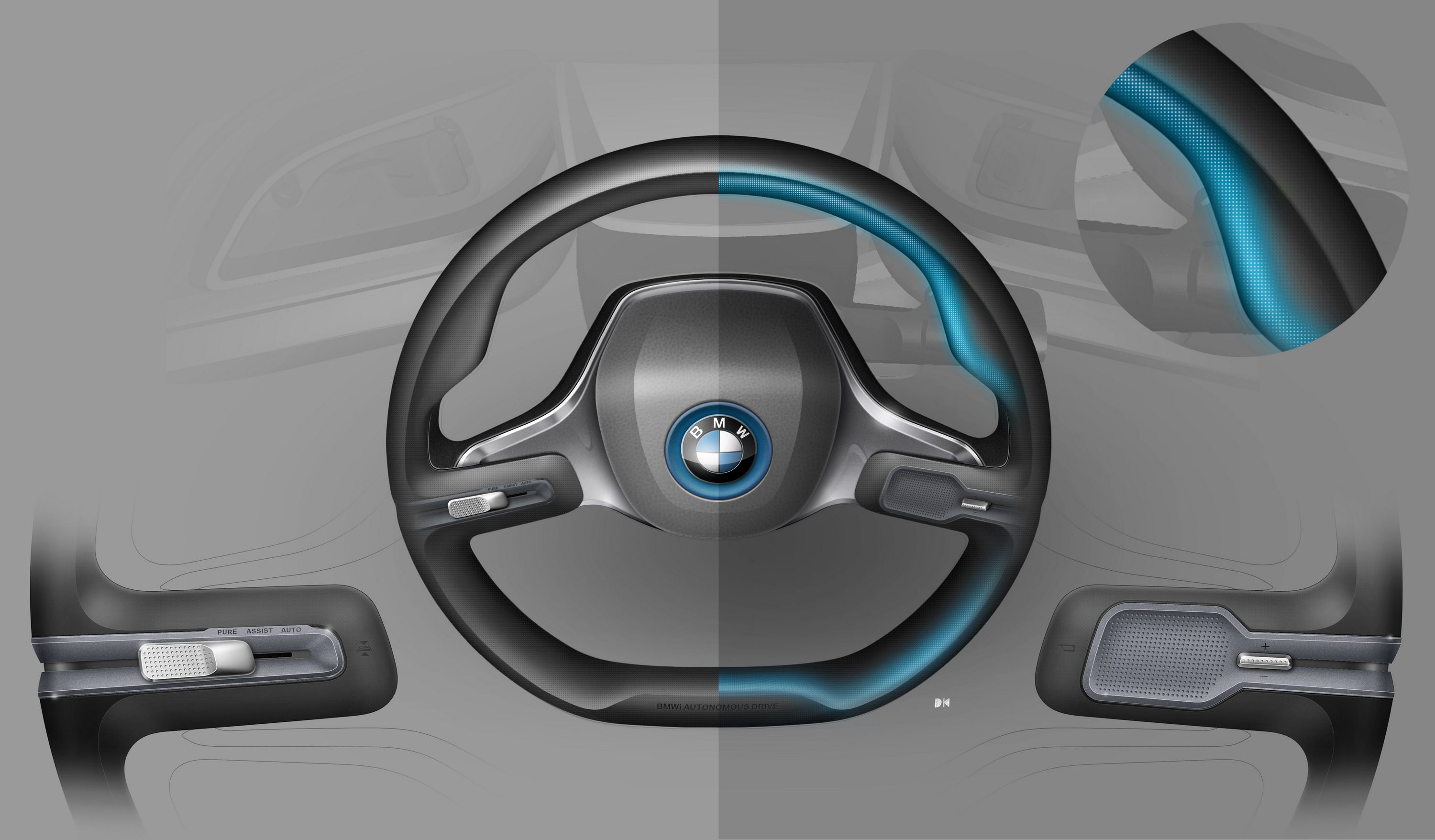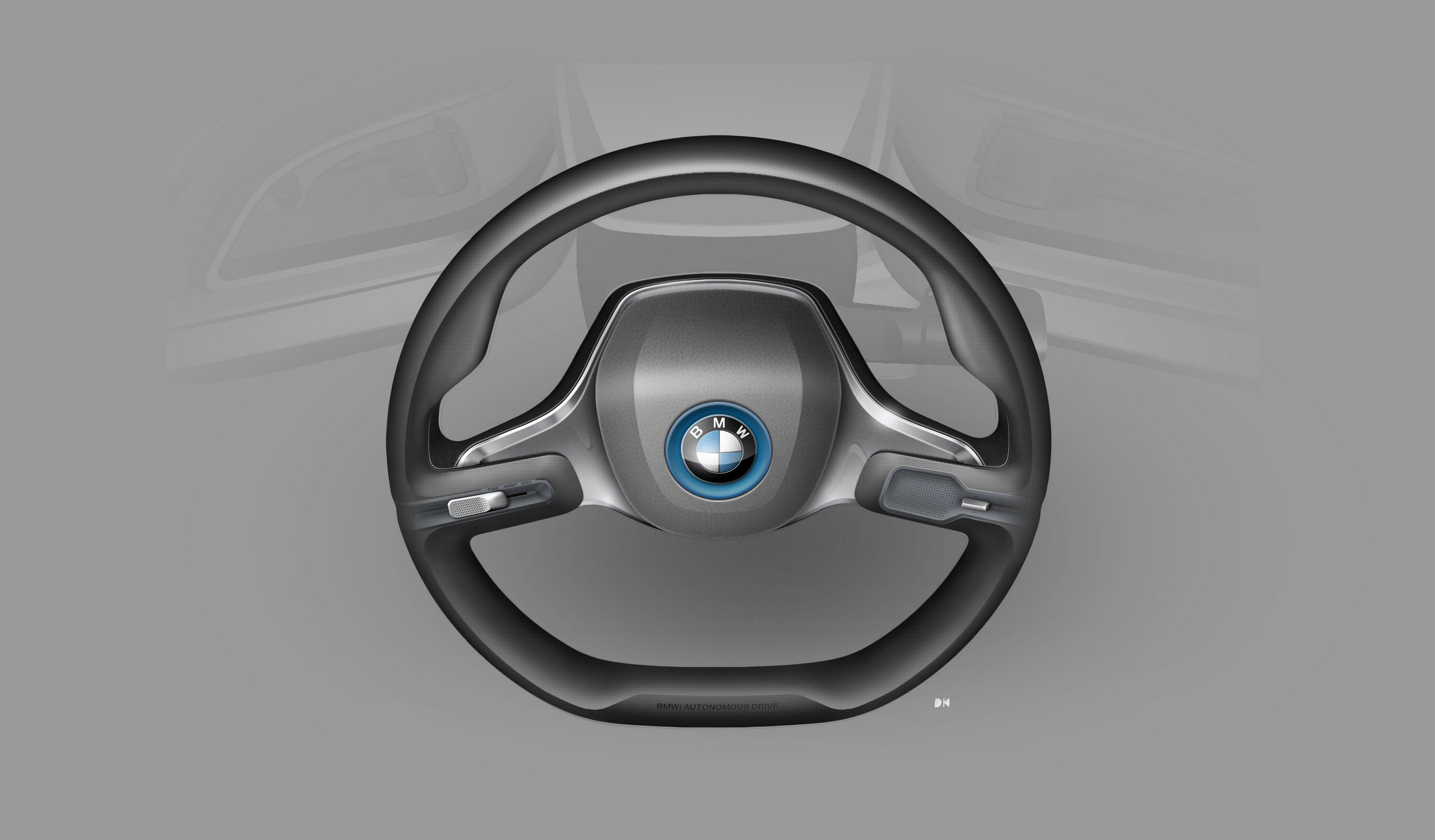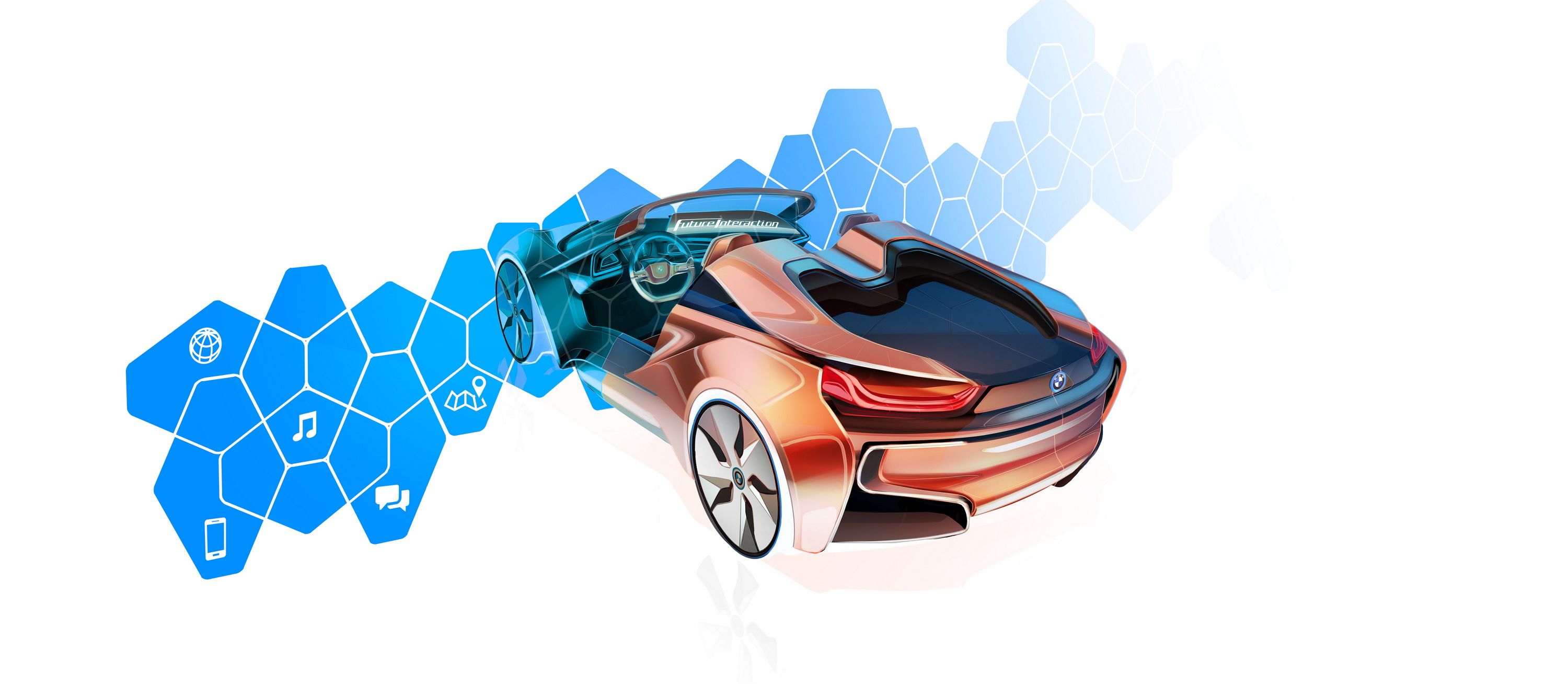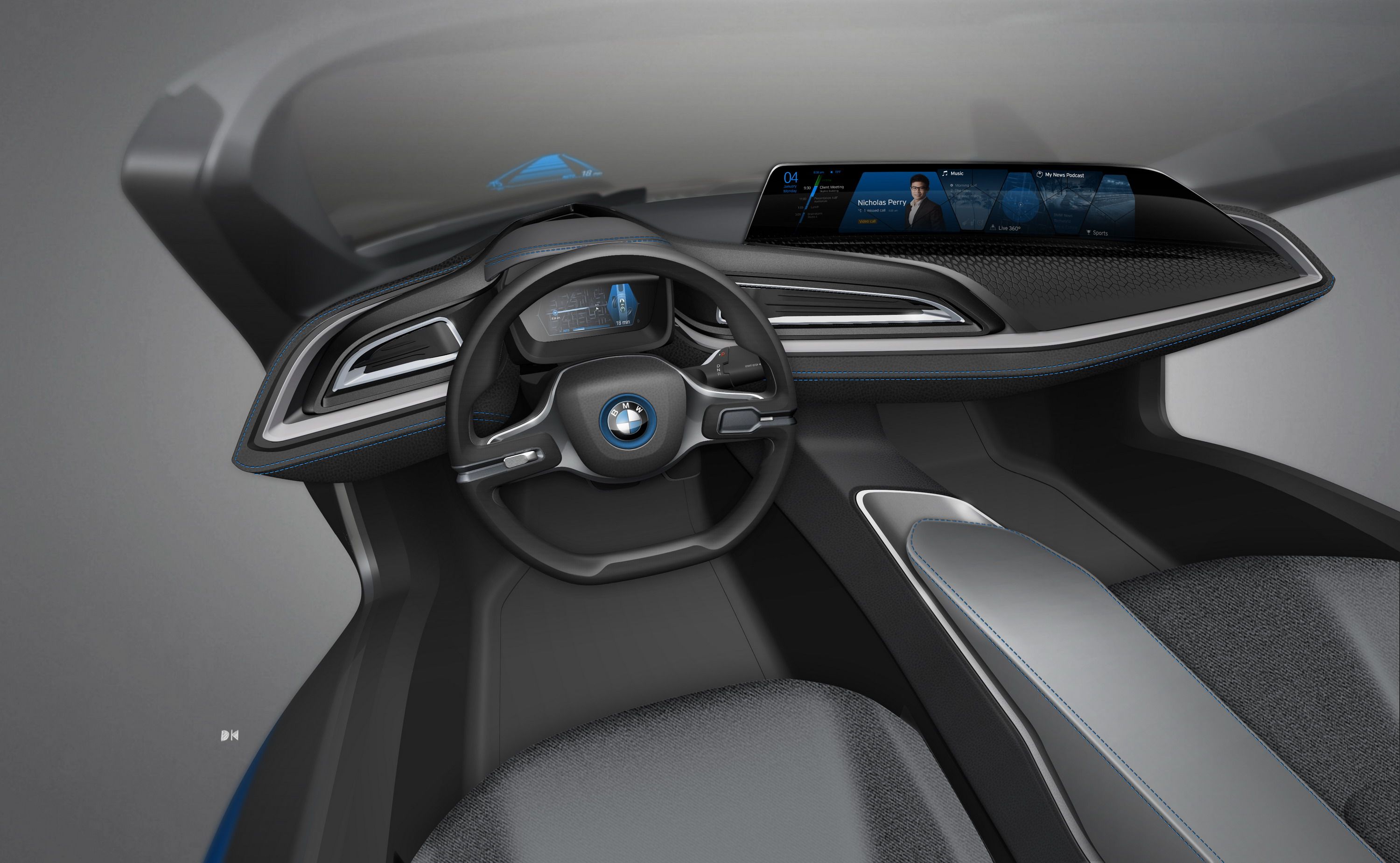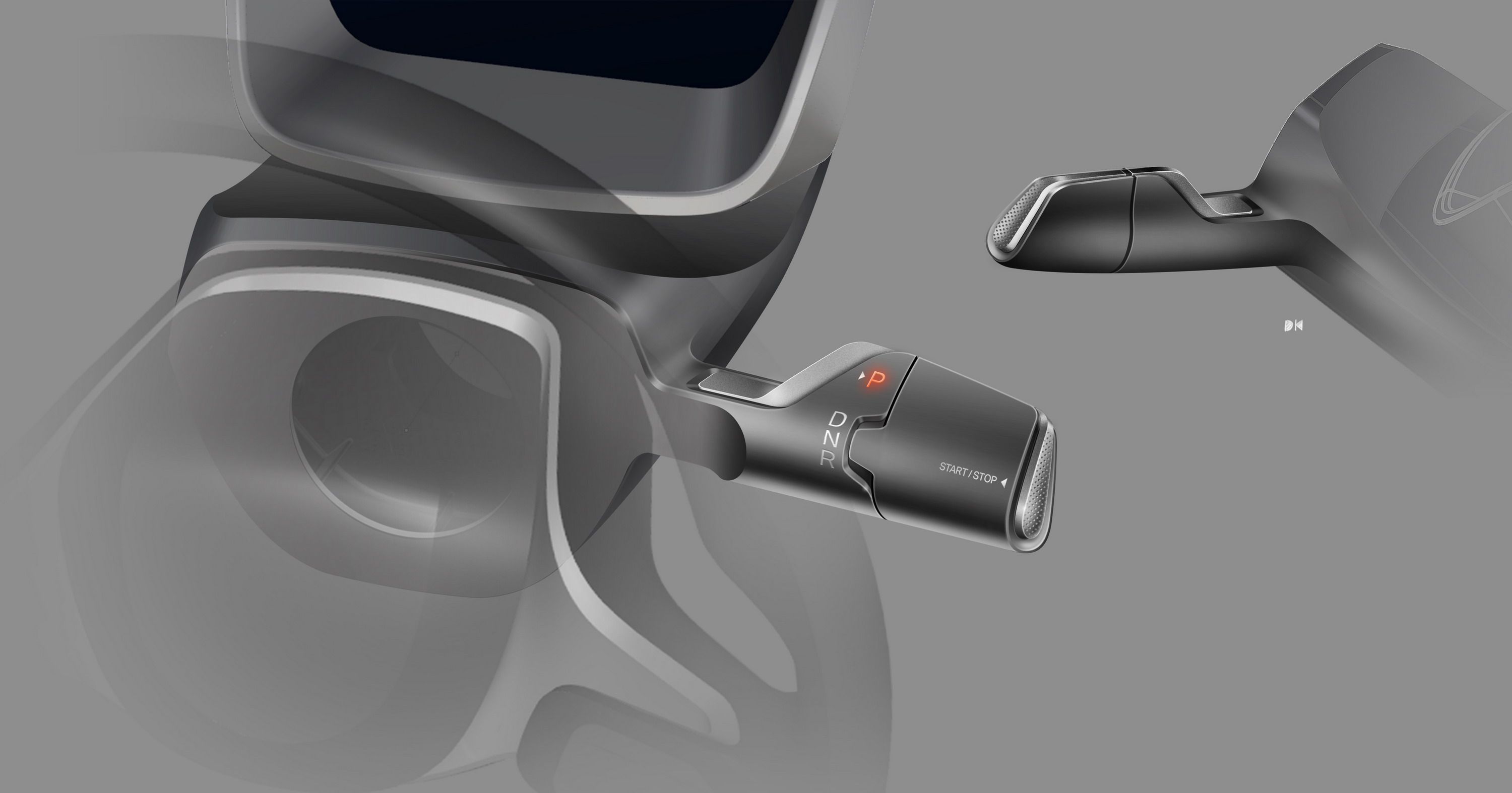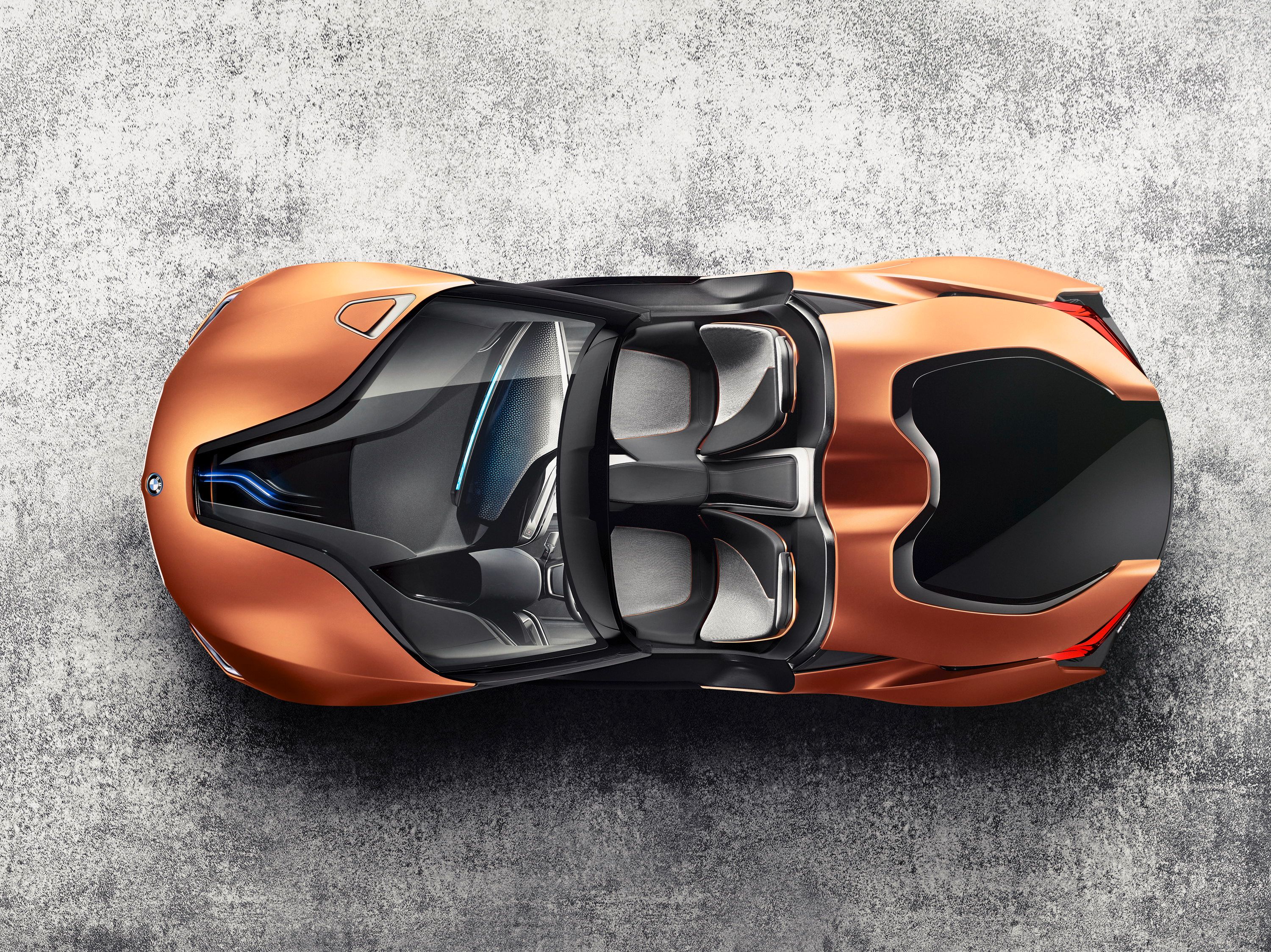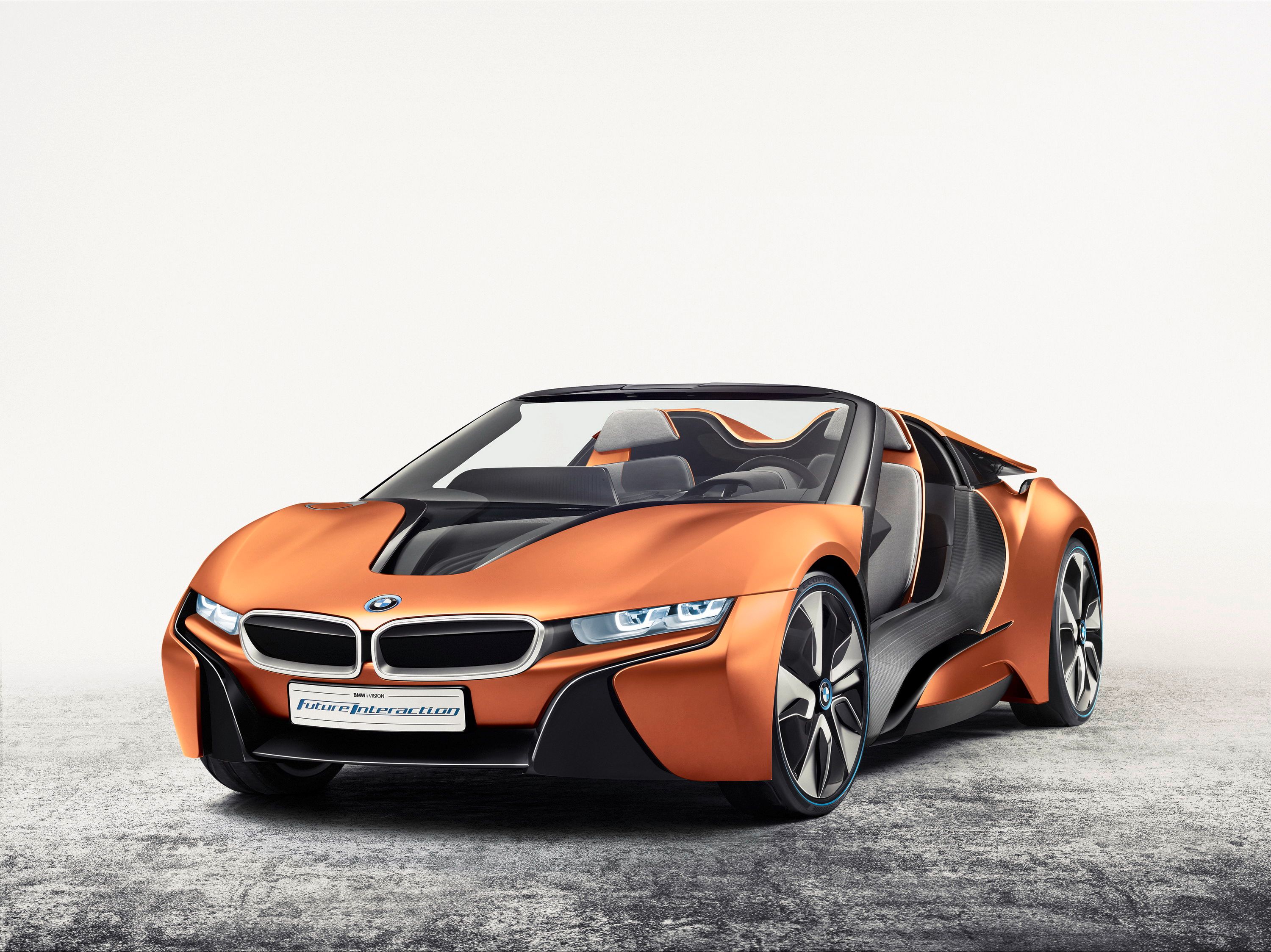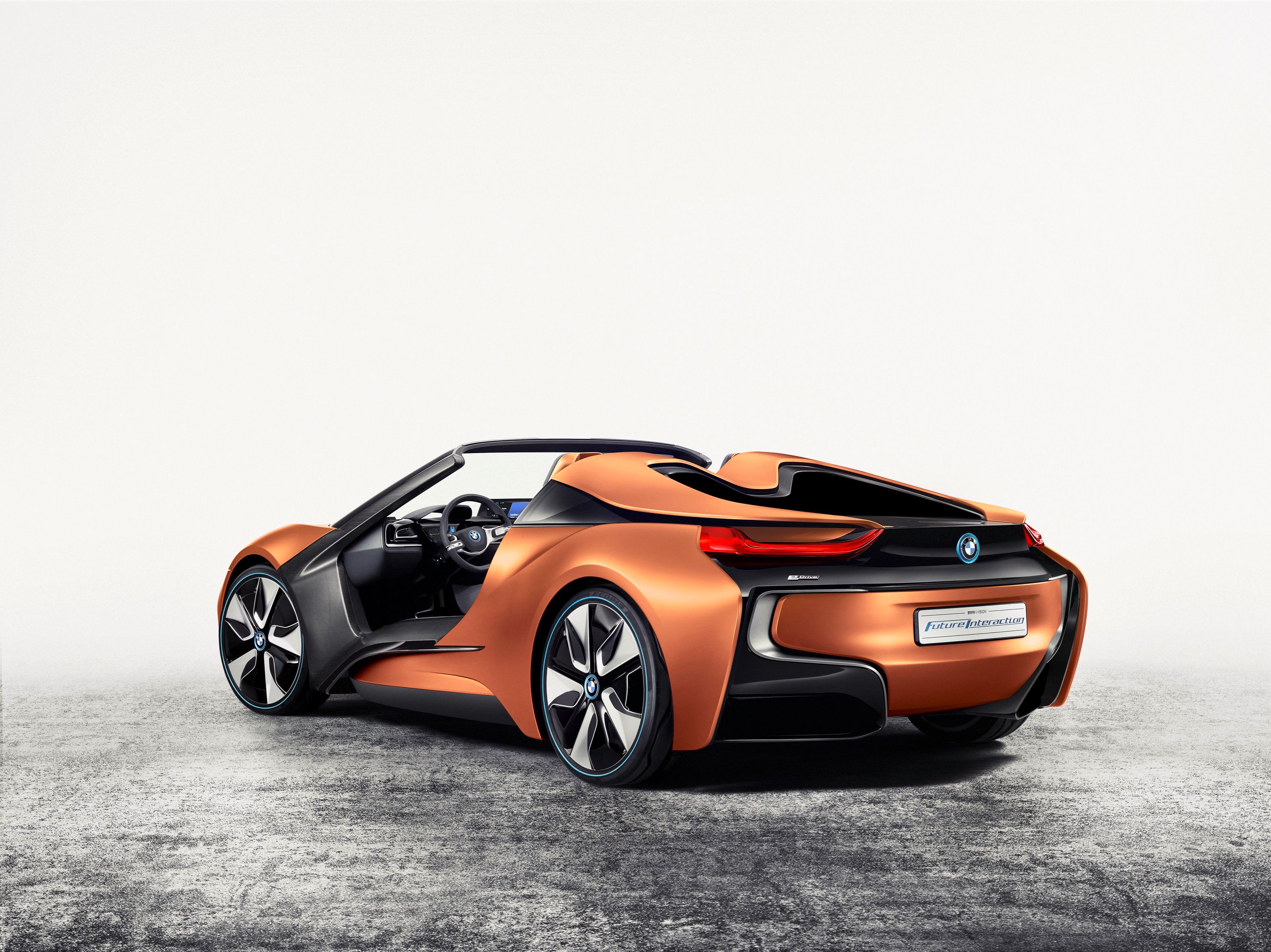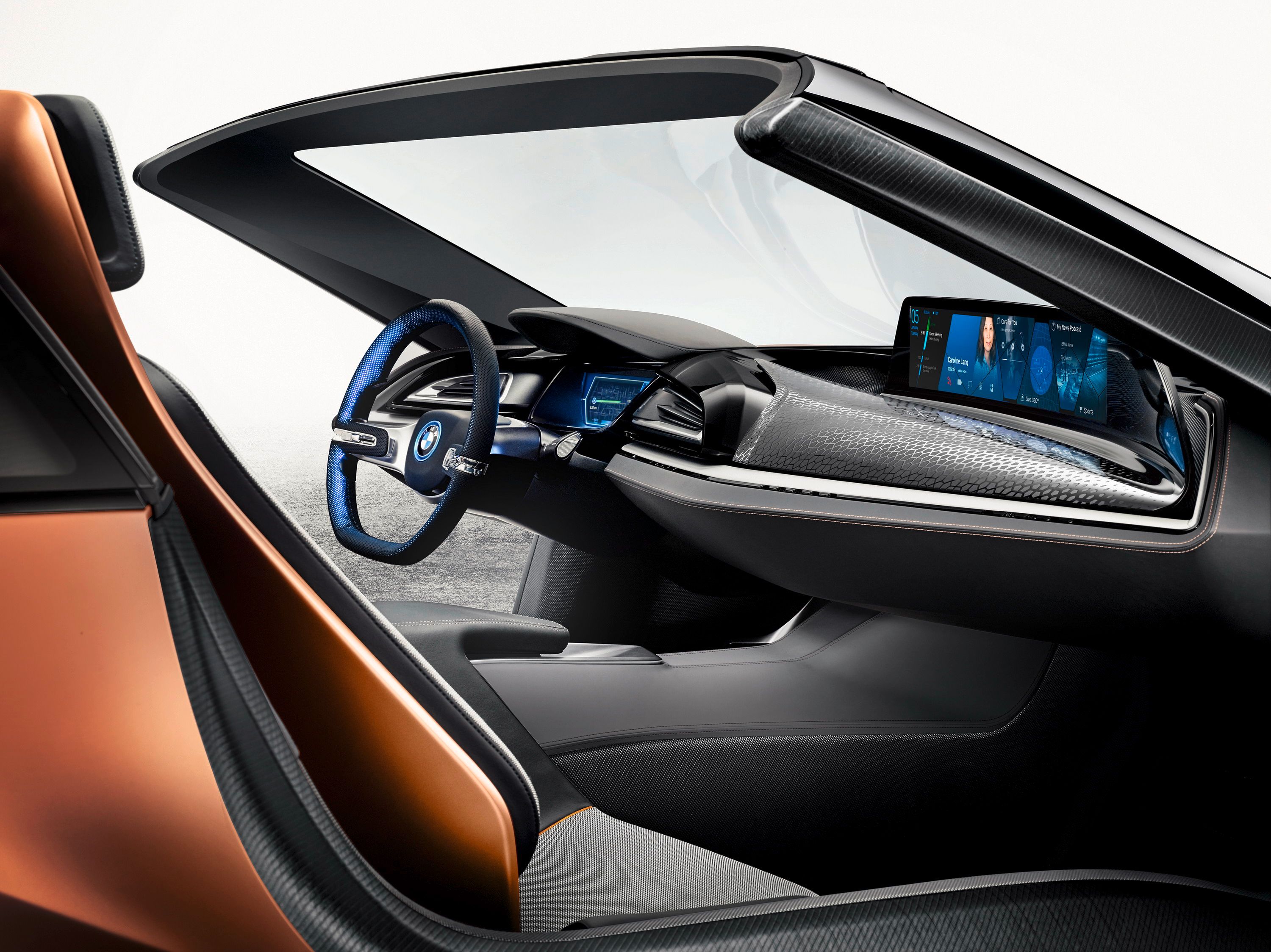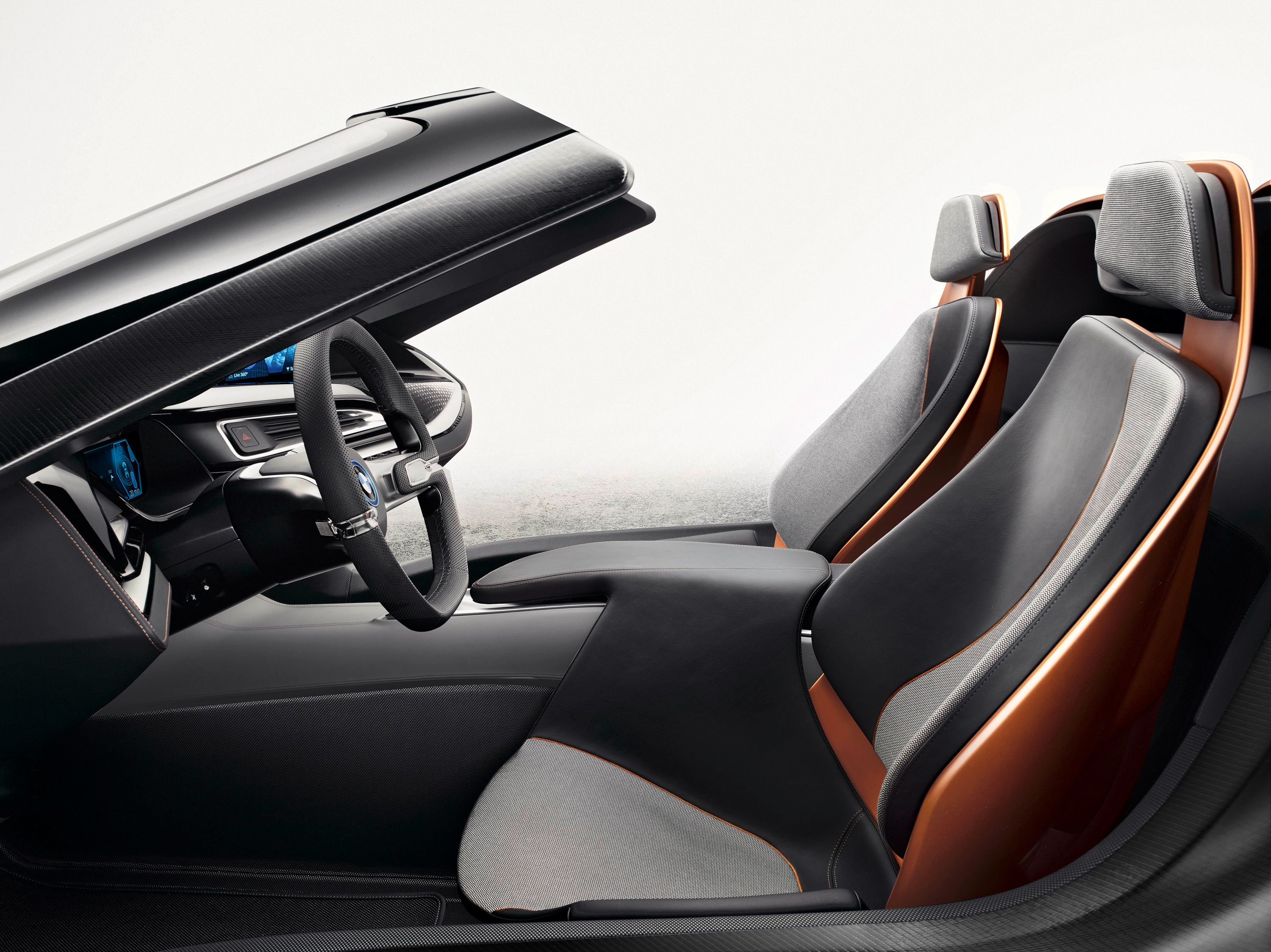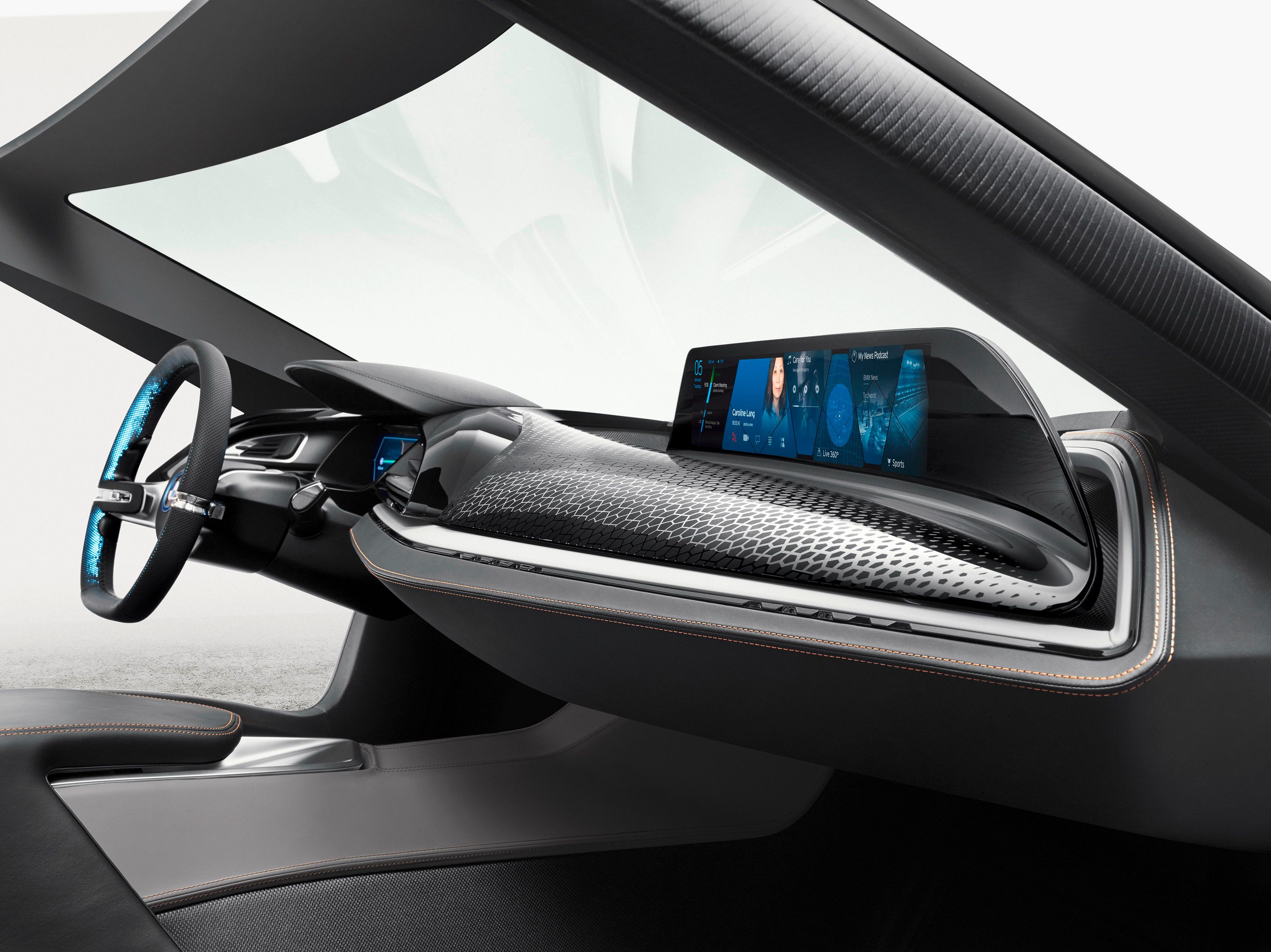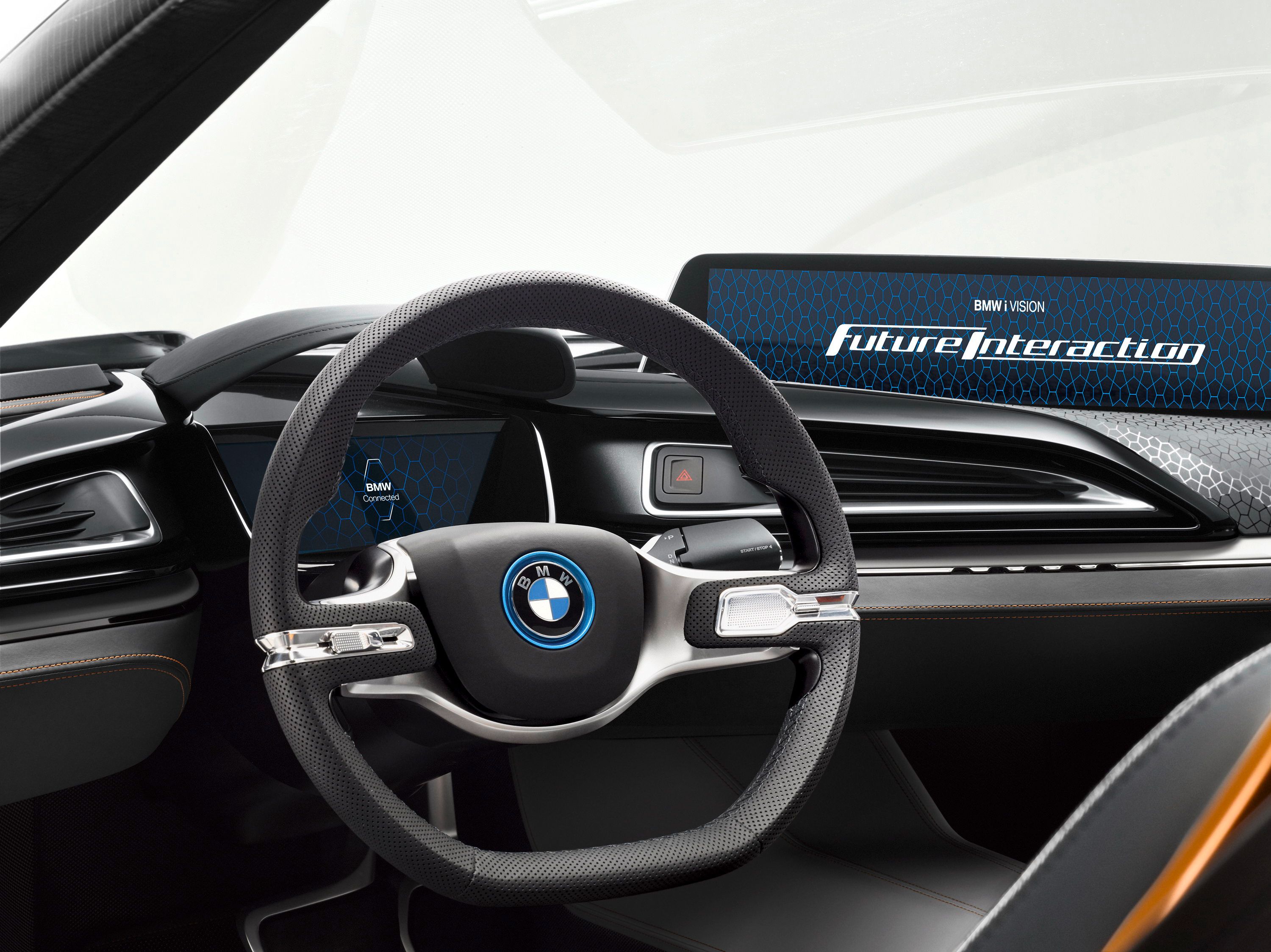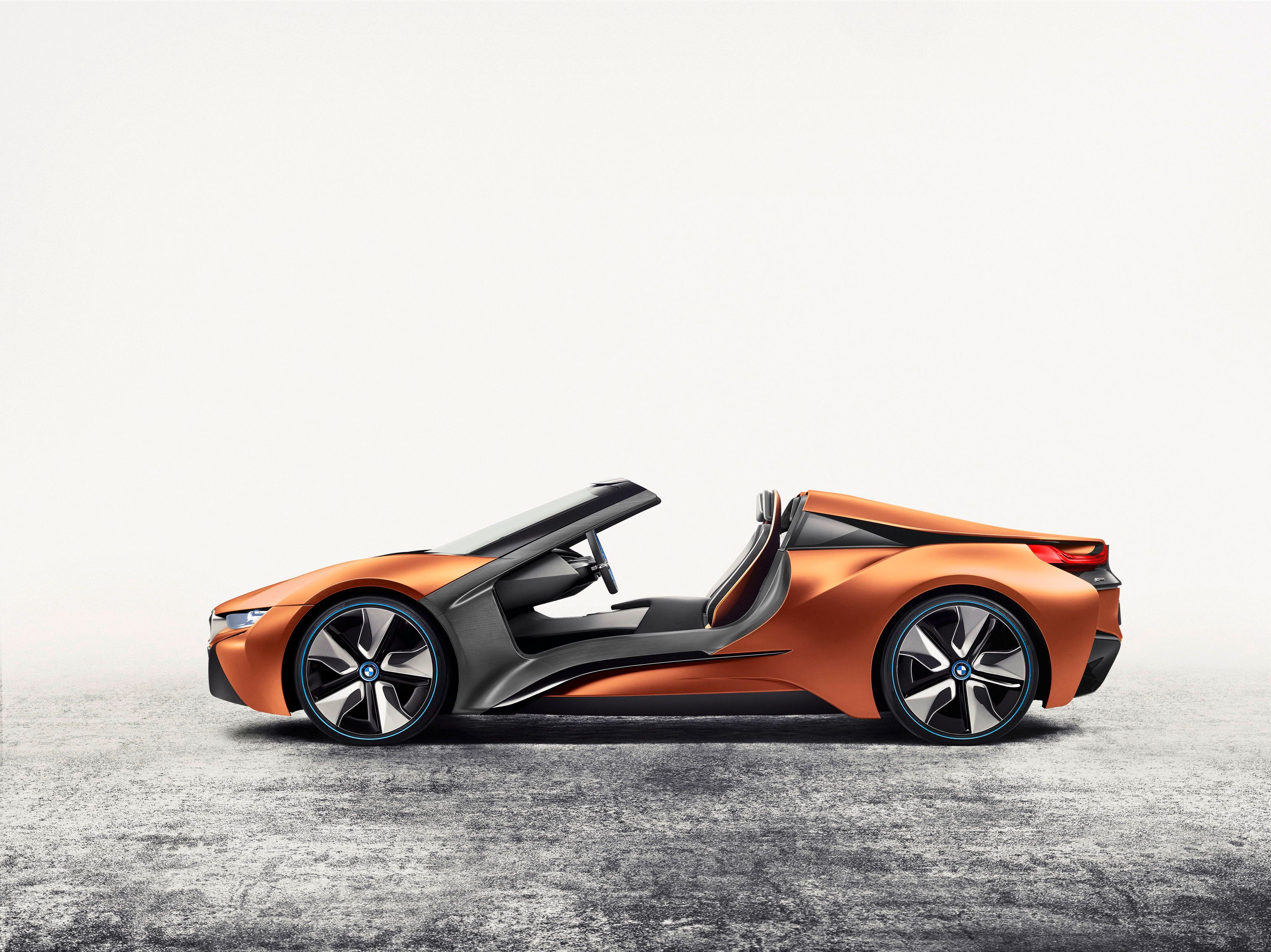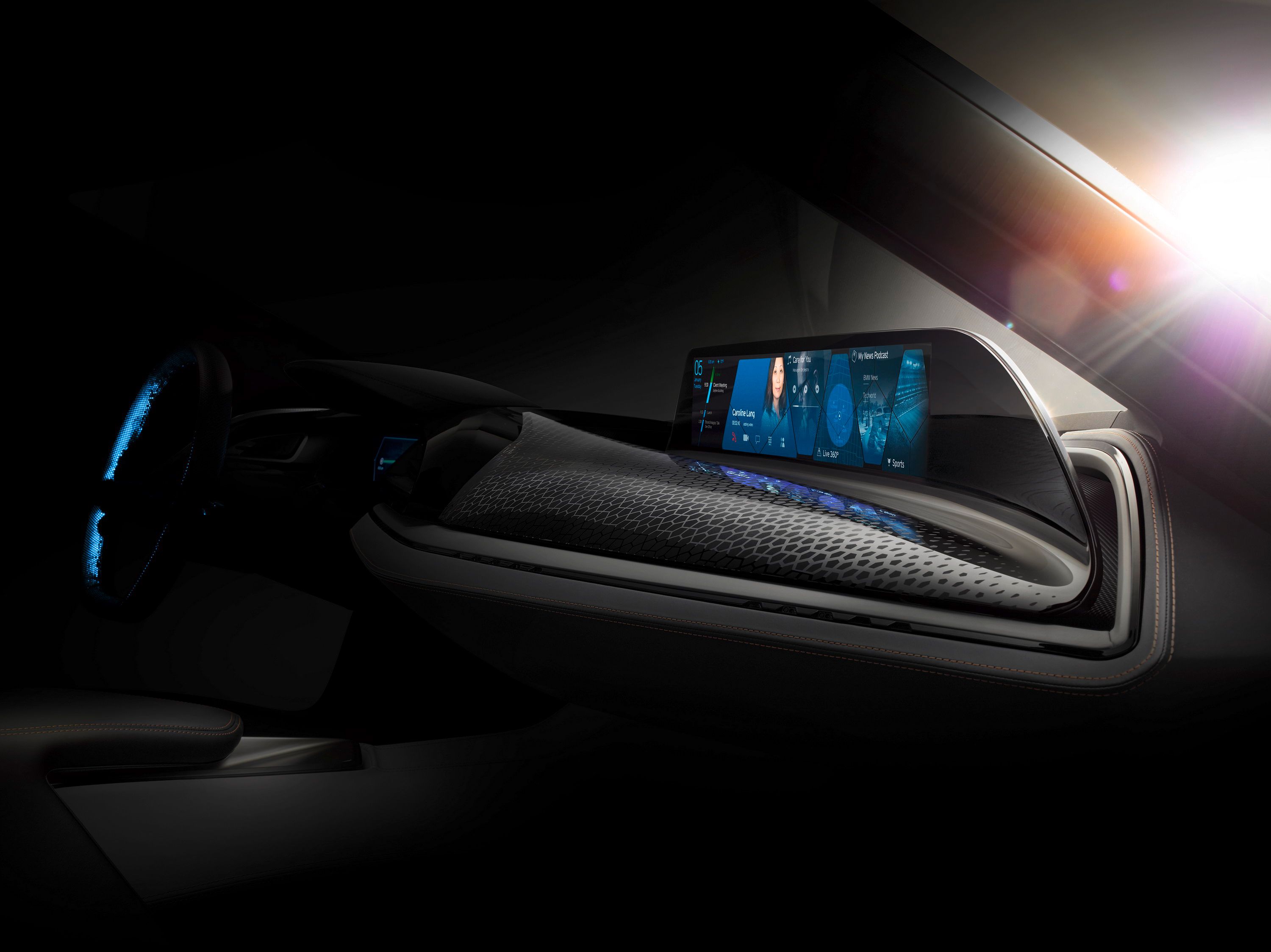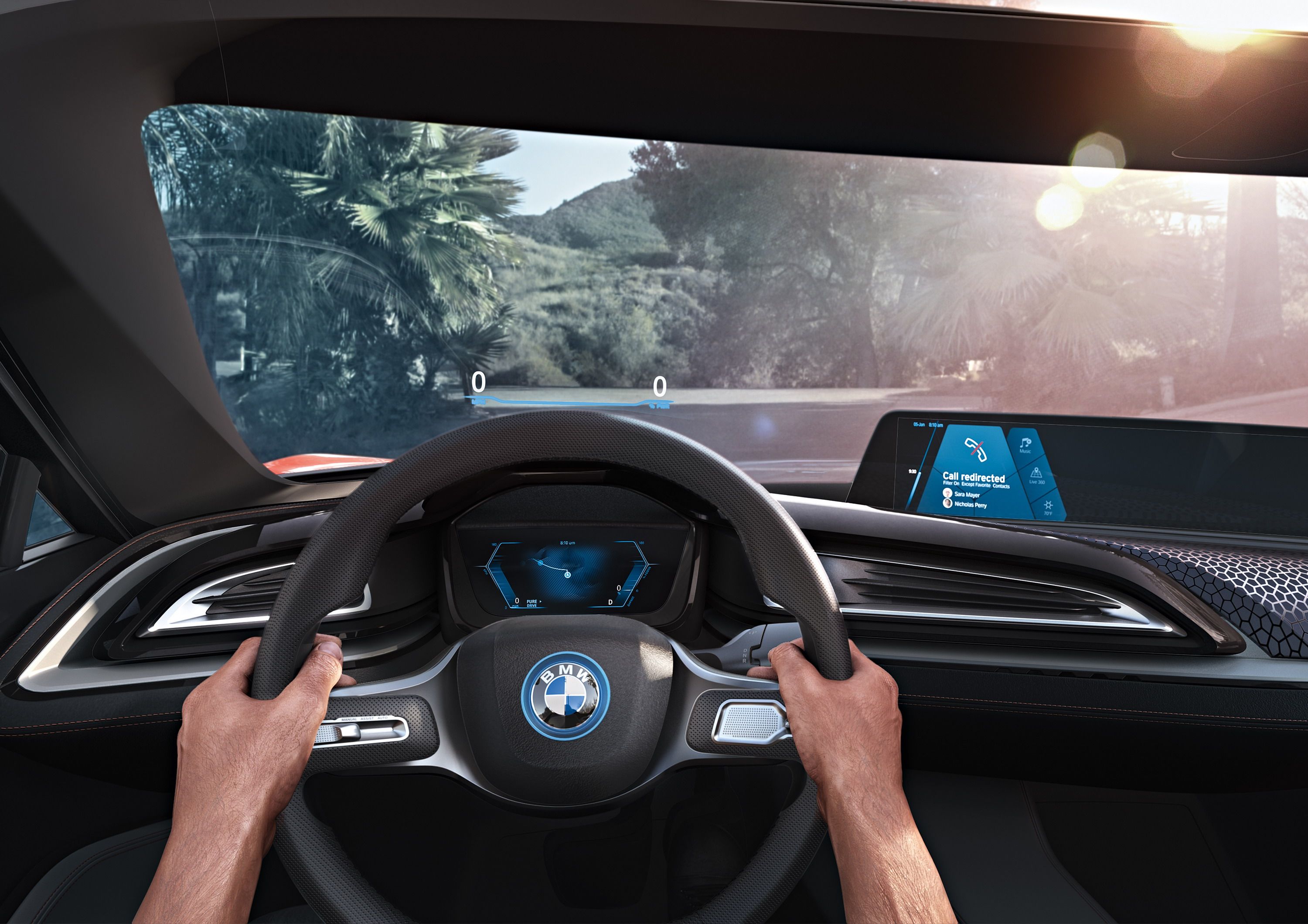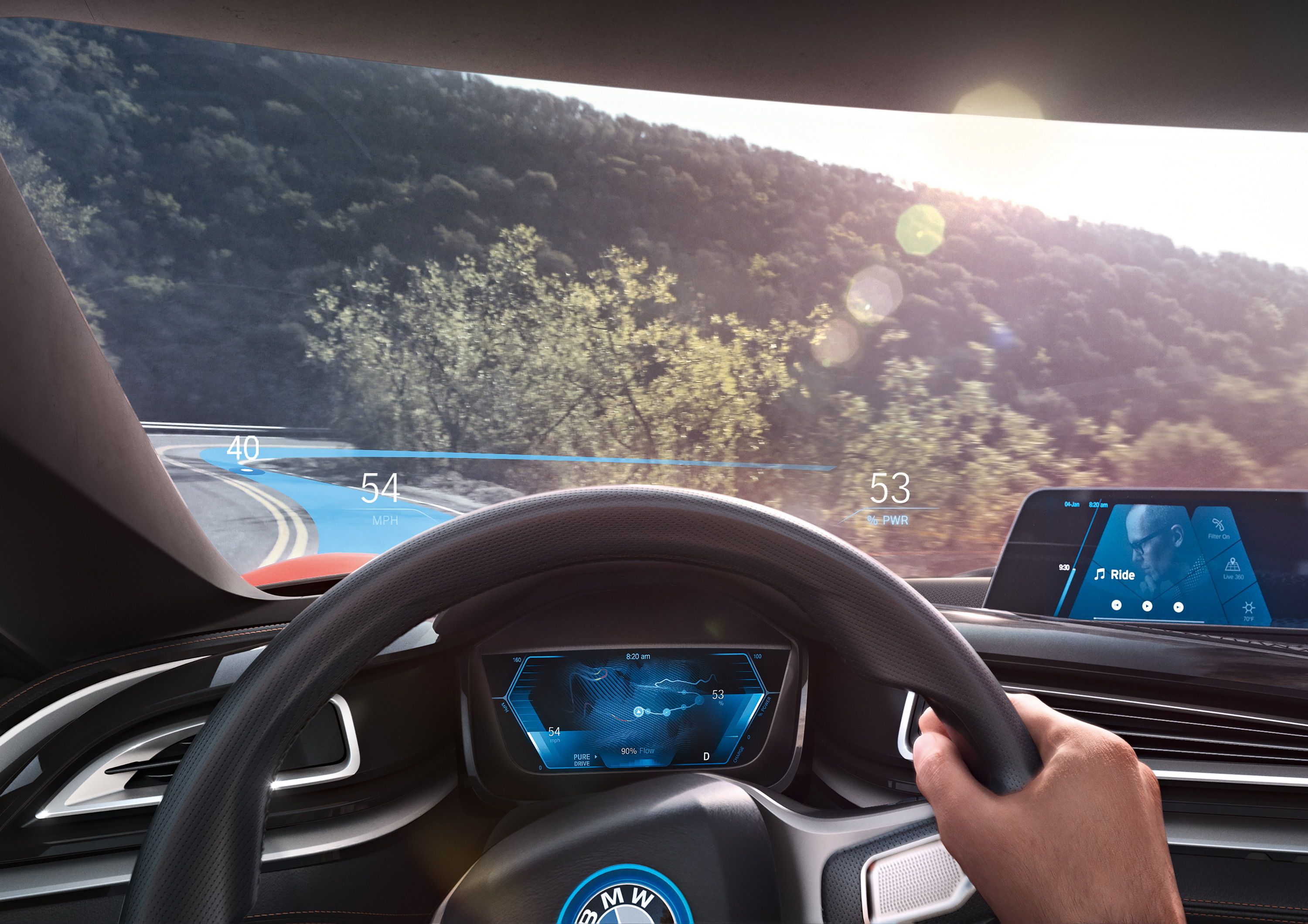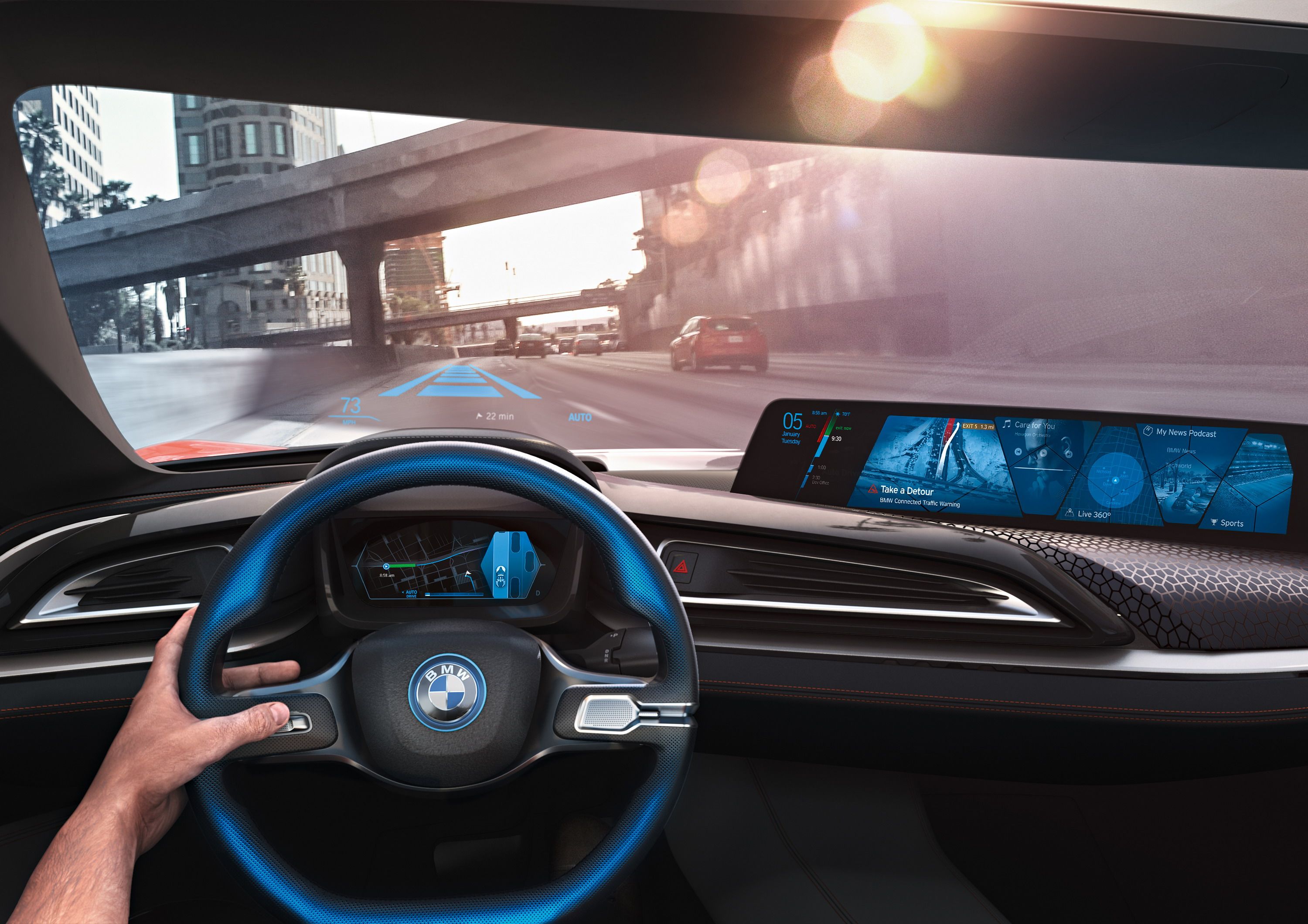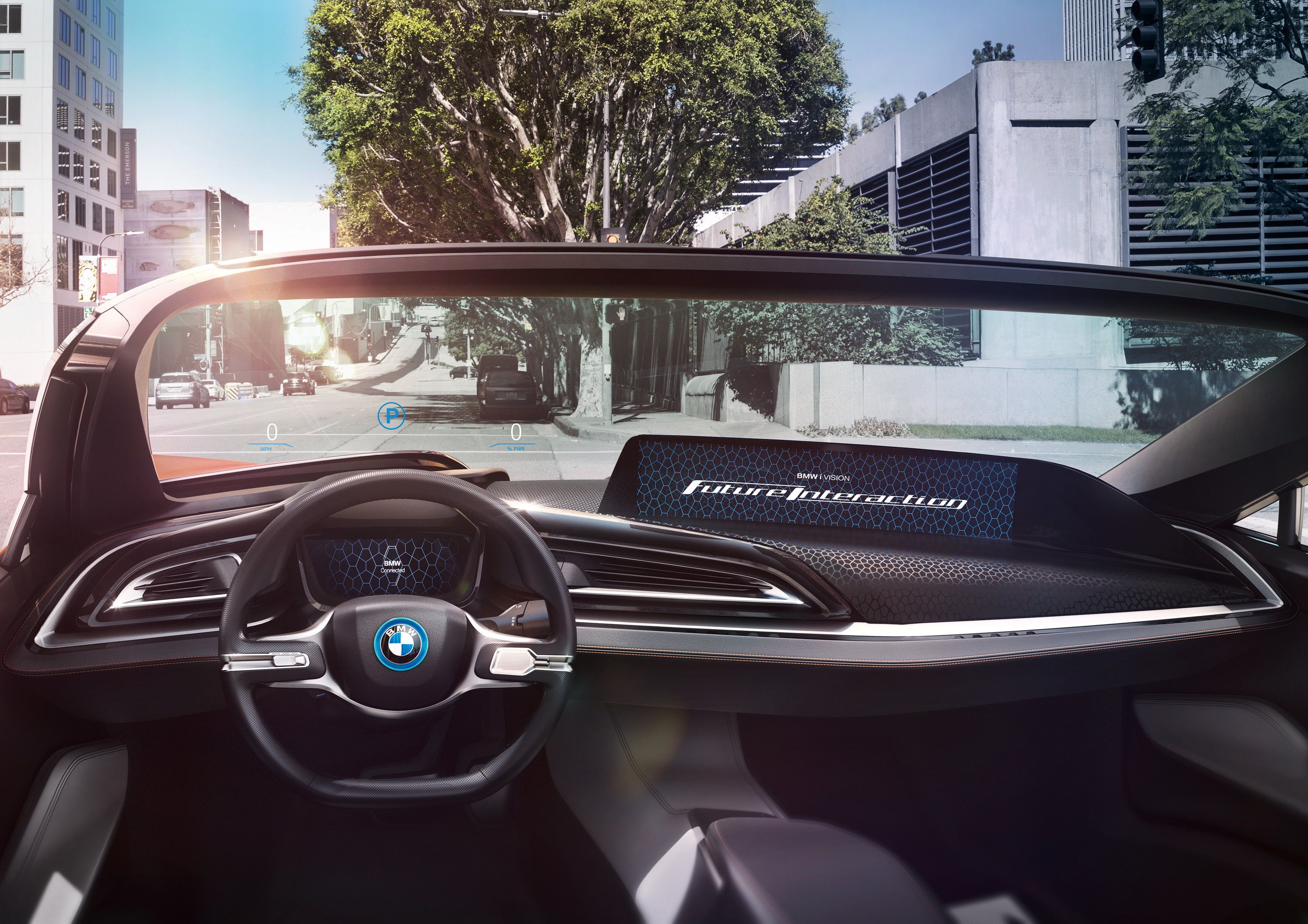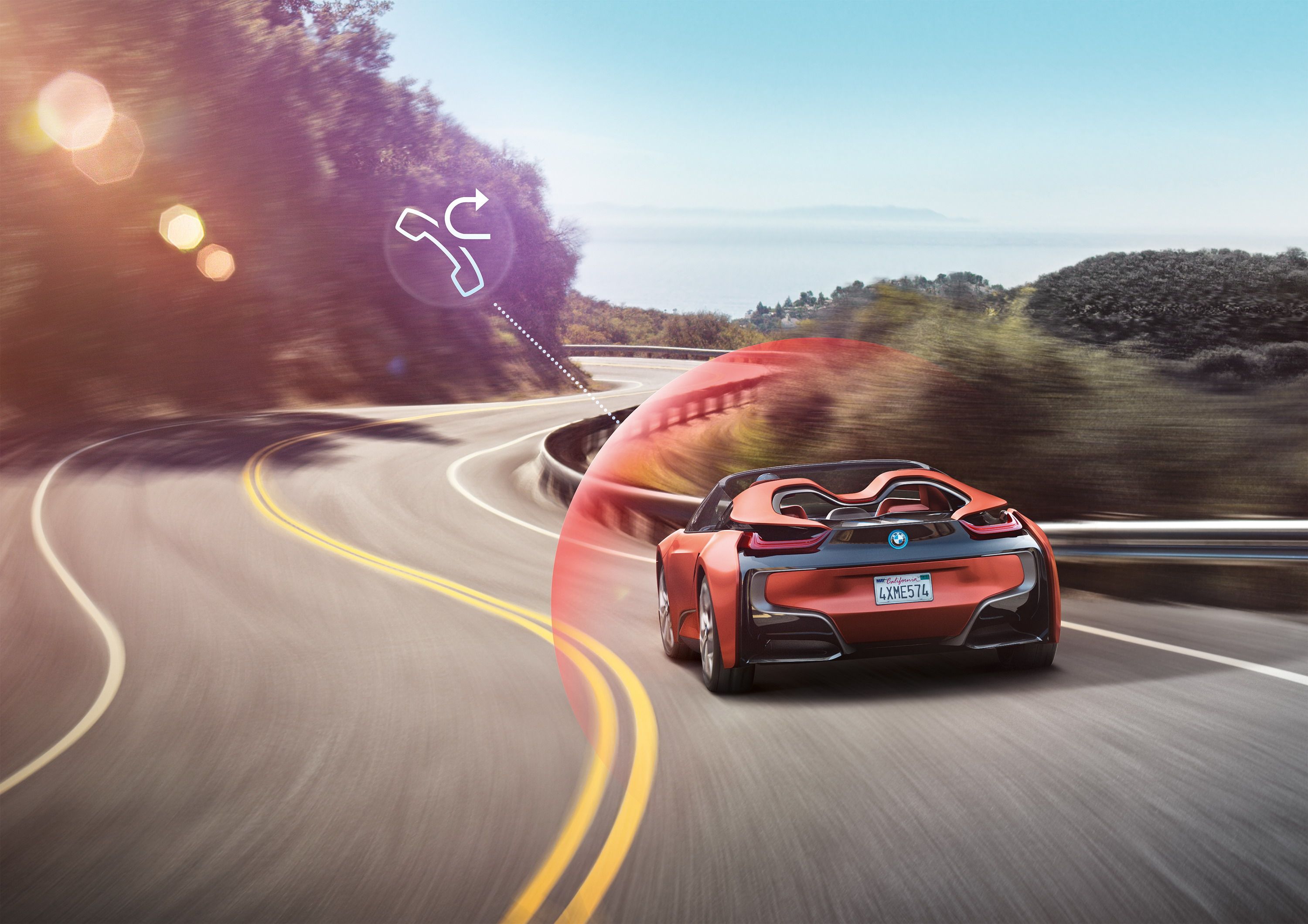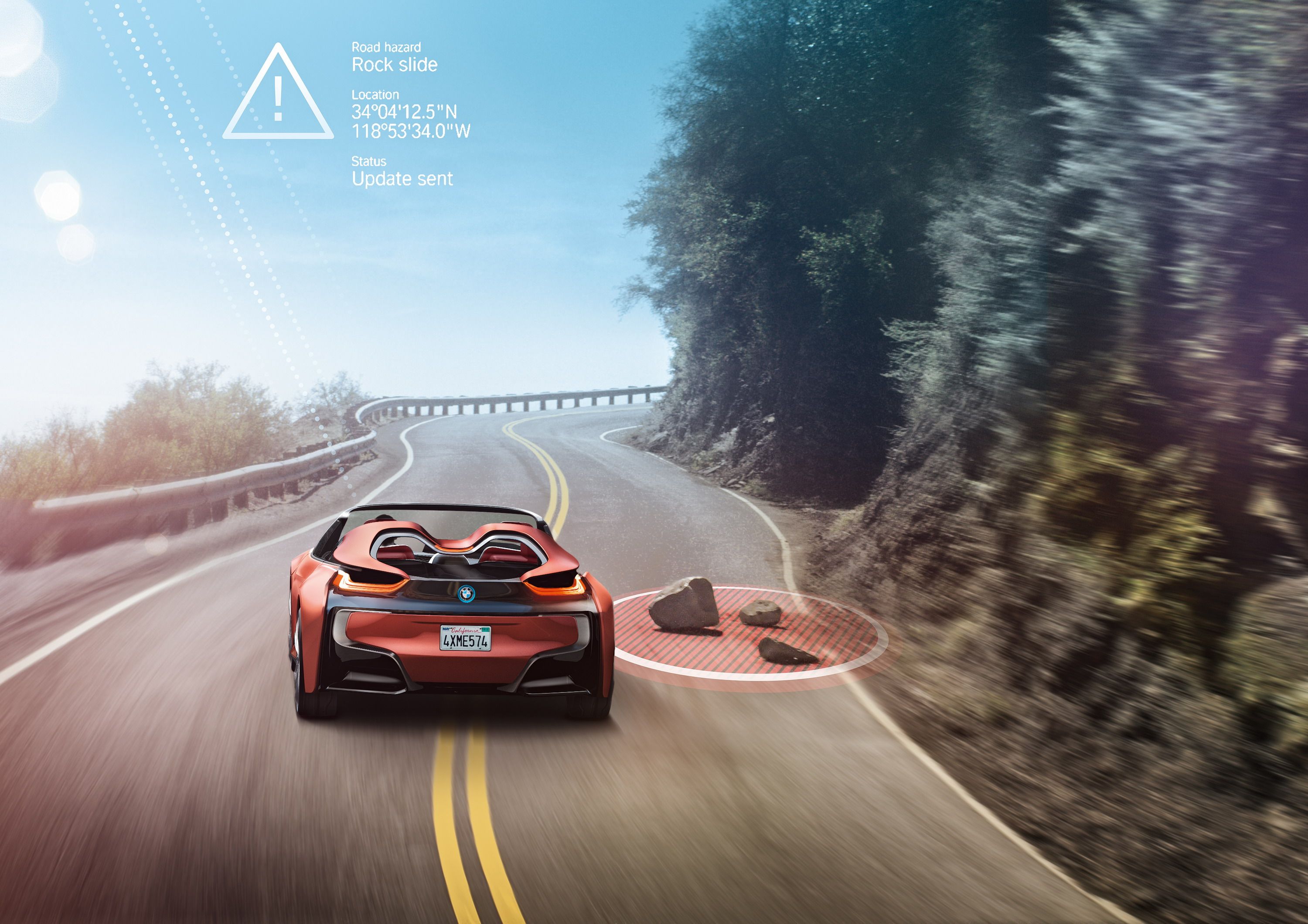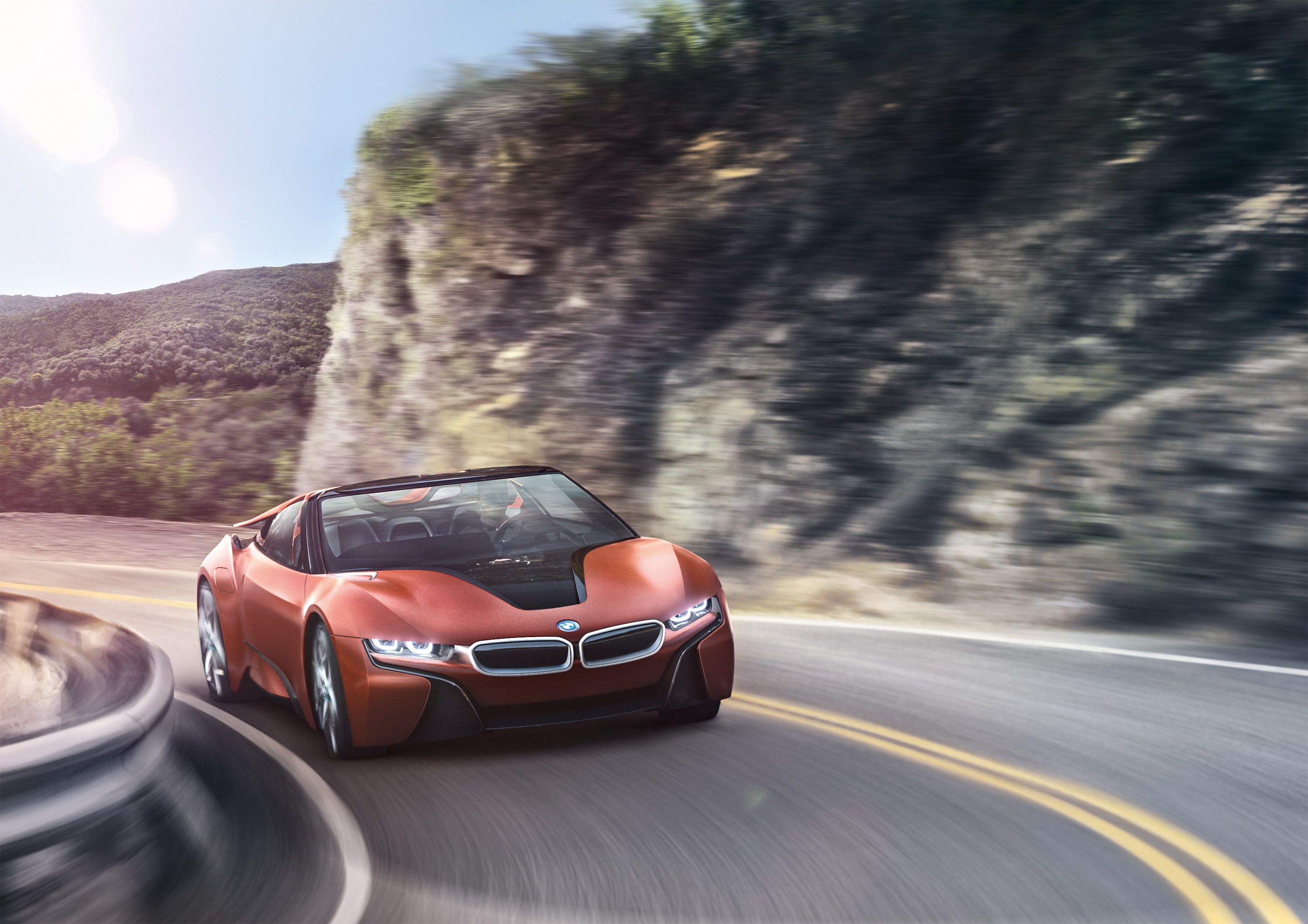There’s a problem with the world’s most advanced, tech-heavy luxury cars->ke505 – too much stuff. Any high-end passenger vehicle worth its leather upholstery is expected to come bearing a feature list longer than a Tolstoy novel, which usually means too much stuff to even keep track of, let alone control. The solution? More gadgets! To streamline the user experience, BMW->ke178 envisions the implementation of gesture tracking, voice recognition, and fully autonomous driving modes, all of which are on display with the i Vision Future Interaction concept recently unveiled at the Consumer Electronics Show (CES)->ke3008 2016.
At first glance, this thing looks like a door-free take on the i8 Concept Spyder we saw back in 2012 in Beijing. That particular vehicle came with unique exterior styling, a slightly truncated wheelbase, and an 8.8-inch display screen mounted in the cabin, plus a variety of bells and whistles carried forward to the “normal” i8->ke4622 road car (prodigious use of carbon-fiber-reinforced plastic and aluminum, for example). The Vision Future adds to this with a “networked cockpit” that supposedly represents the “user interface of the future,” as well as that all-important fully autonomous->ke5282 driving mode option.
Where is BMW heading when it comes to design and technology? Read on to find out.
Continue reading to learn more about the BMW i Vision Future Interaction.
2016 BMW i Vision Future Interaction
- Make: Array
- Model: 2016 BMW i Vision Future Interaction
- [do not use] Vehicle Model: Array
Exterior
Like I said in the intro, this thing is completely door-free, which is a bit of a shame when you consider the drama of the swan-wing hinges found on the stock i8. Of course, the Vision Future’s open-cockpit design does offer its own special kind of drama (you know, the “gee I hope nothing T-bones me” kind), plus it makes sense if you wanna show off the interior to throngs of onlookers.
Under the skin, you still get the Spyder’s space age materials and stubbier profile with short overhangs. The exterior lines look slightly different, including a large, hallow opening just behind the seats. Cameras replace the side-view mirrors for a sleeker appearance.
The paint color is called E-Copper Orange, while accents come drizzled in Frozen Grey, seen primarily on the grille, tank cover, and sills. Lasers are used for the headlights and LEDs are used for the taillights.
Interior
You could argue that the Vision Future makes for a better-looking i8, but BMW’s main focus was clearly the interior.
Let’s start with the layout. Since a confusing mash-up of hard buttons and knobs is a big no-no these days, BMW made sure to reduce the number of things you had to physically touch as much as possible, leaving plenty of room for expressive style. The dash, for example, uses a slick, geometric pattern that looks like a composite latticework. On top is mounted an enormous 21-inch panorama display, which sweeps to the passenger side at an angle that provides usability to both the driver and passenger. At less than 16 inches in width, the screen supposedly won’t obstruct forward vision.
Complementing the 21-incher is a heads-up display in front of the driver, and a three-dimensional display acting as the gauge cluster behind the wheel. Web browsing and the usual gamut of connected features are all on deck for content, and BMW says users can transition from their smart device to the onboard infotainment system without a hiccup. In-depth traffic information is also available for a less stressful commute.
Good ‘ole touchscreens offer the tried-and-true swipe and tap controls, and voice recognition provides a chance to practice your enunciation, but one of the cooler features on the Vision Future is the advanced gesture control.
BMW seems to be doubling down on this tech, as it’s already in place on the new 7 Series. The Vision Future steps it up with AirTouch, a next-generation gesture control system that expands on the existing system with more functionality and additional gestures. There are now more sensors in the dash, which allow the system to recognize hand movements in the third dimension. A push motion, for example, can scroll through menus on the display. A single button was added to the left side of the steering wheel for quicker selections (navigate with the free hand, confirm with the hand on the steering wheel).
But this wouldn’t be a CES concept car without some degree of autonomy. The Vision Future offers three different driving modes with varying levels of digital intervention and computer control, including “Pure Drive,” “Assist,” and “Auto Mode.”
In “Pure Drive” mode, the human pilot is in complete control. This is ideal for having fun on a winding back road or racetrack, providing only minimal, passive automated assistance. Potential dangers are highlighted with a warning, but it’s up to the driver to control the vehicle. Talent is assisted by the heads-up display, which can project the ideal line and braking point for a corner, just like noob mode in a video game.
Next up is “Assist,” which activates select autonomous systems to find a balance between human and machine control. In this mode, the car will actively avoid dangers when they are detected.
Finally, there’s “Auto Mode.” The Vision Future will detect when it’s traveling on a road where fully autonomous operation is permissible and notify the driver. Switch into “Auto Mode,” and the steering wheel will glow blue and relocate to give the driver more space to relax. The seats will also change into a “lounge profile” for easier social interaction. Should the driver need to resume control, the system will issue a notification, turn on a red light, and wait five to seven seconds before disabling full autonomy.
In addition to autonomous functions, the different driving modes also adjust available content on the various infotainment screens with the hope of reducing distractions. For example, if the driver takes a call while in “Pure Drive,” it’ll be audio only. Switch to “Auto Mode,” and video conferencing will be available.
While reducing the number of buttons was high on BMW’s priority list, the drive mode selector is physically located on the left-hand side of the steering wheel, which makes sense if you don’t want to accidently gesture your way into “Pure Drive” while eating a tuna sandwich.
Finally, interior materials include plastic and carbon fiber, while leather was used for the seat upholstery and dashboard. The few buttons that do exist are finished in polished aluminum.
Drivetrain
BMW made no mention of changes to the drivetrain, so expect the i Vision Interaction to use an unmodified i8 hybrid system. As a refresher, that includes a 1.5-liter three-cylinder ICE producing 231 horsepower and 236 pound-feet of torque, plus an electric motor making 131 horsepower and 184 pound-feet of torque.
Working together, total output is measured at 362 horsepower and 420 pound-feet of torque, yielding a 0-to-60 time of around 4.2 seconds and a top speed of 155 mph. All-electric range is 22 miles.
Conclusion
This concept has a lot of things going for it. From a design perspective, it’s a very pleasant thing to look at, especially the interior. The huge screen is a sign of things to come, and the connectivity, gesture control, and autonomous features are all undeniably cool.
That said, this concept isn’t overtly revolutionary in the ideas it brings to the table. The exterior is fantastic, but not much of a departure from the i8 we all know and love. The interior is airy and open, but as far as I can tell, the only reason the doors and roof are gone is because it makes it easier to see inside. The connectivity and autonomous features are interesting, but don’t really stand out from the visions other automakers are putting forward. As I see it, the only real standout is the gesture control, but even that is an evolution of the system currently in place on the 7 Series.
But maybe all that is a good thing. Concept cars have a nasty habit of presenting fantastic ideas that never actually make it to production. Perhaps this one is different?
I certainly hope so, especially if it remains sans roof. Keep the doors attached, though.

